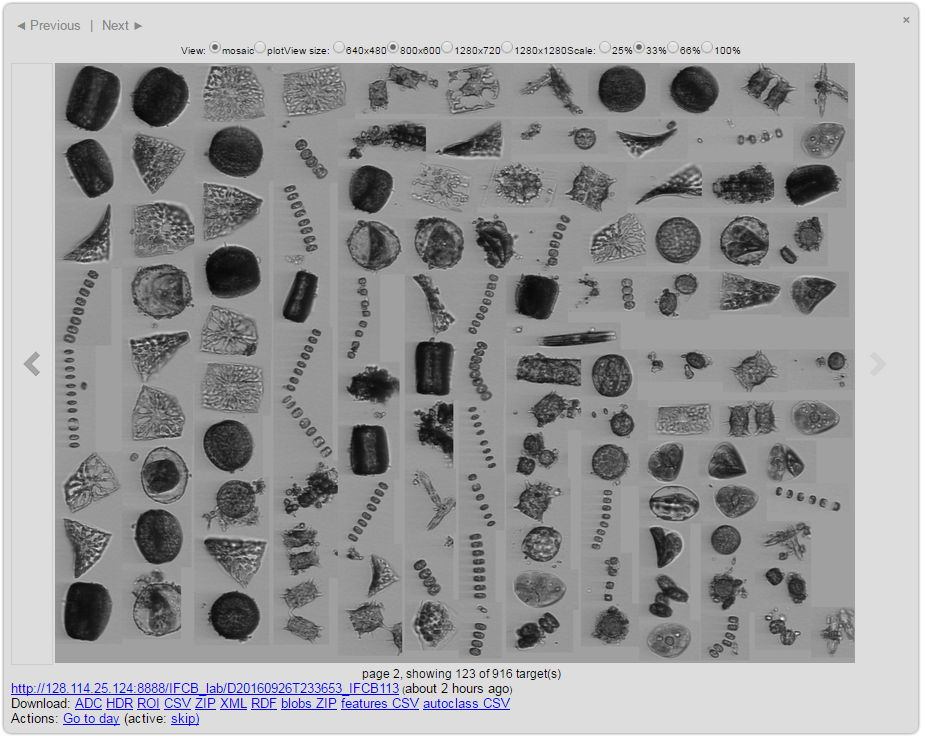Identifying and quantifying the diversity of phytoplankton in the waters off of our coast is vital for monitoring and understand harmful algal blooms (HABS) (Link to HABS page). Nearly every year, recreational and commercial fisheries are closed due to excessive amounts of biotoxins found in shellfish and crustaceans that are produced by harmful algae. Traditionally, trained experts must identify and quantify phytoplankton by viewing waters samples under microscopes — a time-consuming process that requires samples of water to be collected and taken back to a laboratory.
The Imaging Flowcytobot (IFCB) automates this process. Developed at WHOI and manufactured by McLane Labs, this robotic microscope continuously takes images of each particle in a small sample (~15 mL) of water every hour. An onboard computer then uses image recognition processes and a machine-learning model to estimate both the identity and the volume of the phytoplankton. This information can then be extrapolated into metrics like biovolume and cell density. As the datasets that are used to train the image classifier continue to improve and grow, the ability to correctly identify the individual phytoplankton will as well.
This novel instrument allows scientists to observe phytoplankton communities around the clock, leading researchers to both develop a better understanding of what causes these events and also provide information as soon as the conditions for a bloom occurs.
CeNCOOS Projects:
- CeNCOOS supports the data management and data dissemination of an IFCB deployed at the Santa Cruz Wharf by the Kudela Lab at UCSC.
- California recently funded additional IFCBs
- More about Phytoplankton Identification
- More about the IFCB

